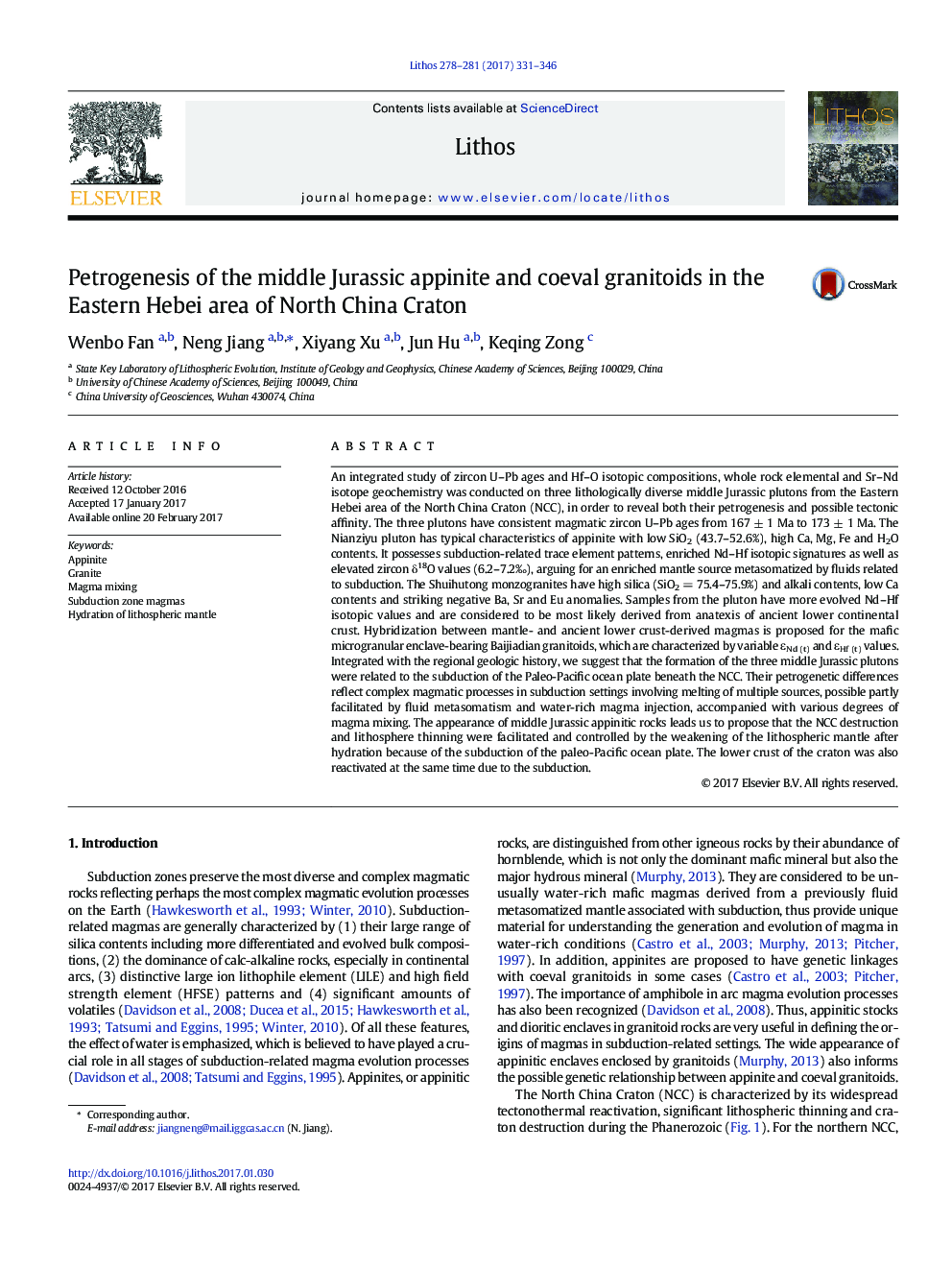| کد مقاله | کد نشریه | سال انتشار | مقاله انگلیسی | نسخه تمام متن |
|---|---|---|---|---|
| 5784173 | 1638632 | 2017 | 16 صفحه PDF | دانلود رایگان |

- ~Â 170Â Ma appinite and two coeval granitoid were identified.
- The appinite was originated from extremely enriched metasomatized mantle.
- Baijiadian granitoid is a hybrid between mantle- and crust-derived magmas.
- The Shuihutong granites have an ancient lower crust source.
- Their origins support the lithosphere thinning of NCC because of its hydration.
An integrated study of zircon U-Pb ages and Hf-O isotopic compositions, whole rock elemental and Sr-Nd isotope geochemistry was conducted on three lithologically diverse middle Jurassic plutons from the Eastern Hebei area of the North China Craton (NCC), in order to reveal both their petrogenesis and possible tectonic affinity. The three plutons have consistent magmatic zircon U-Pb ages from 167 ± 1 Ma to 173 ± 1 Ma. The Nianziyu pluton has typical characteristics of appinite with low SiO2 (43.7-52.6%), high Ca, Mg, Fe and H2O contents. It possesses subduction-related trace element patterns, enriched Nd-Hf isotopic signatures as well as elevated zircon δ18O values (6.2-7.2â°), arguing for an enriched mantle source metasomatized by fluids related to subduction. The Shuihutong monzogranites have high silica (SiO2 = 75.4-75.9%) and alkali contents, low Ca contents and striking negative Ba, Sr and Eu anomalies. Samples from the pluton have more evolved Nd-Hf isotopic values and are considered to be most likely derived from anatexis of ancient lower continental crust. Hybridization between mantle- and ancient lower crust-derived magmas is proposed for the mafic microgranular enclave-bearing Baijiadian granitoids, which are characterized by variable εNd (t) and εHf(t) values. Integrated with the regional geologic history, we suggest that the formation of the three middle Jurassic plutons were related to the subduction of the Paleo-Pacific ocean plate beneath the NCC. Their petrogenetic differences reflect complex magmatic processes in subduction settings involving melting of multiple sources, possible partly facilitated by fluid metasomatism and water-rich magma injection, accompanied with various degrees of magma mixing. The appearance of middle Jurassic appinitic rocks leads us to propose that the NCC destruction and lithosphere thinning were facilitated and controlled by the weakening of the lithospheric mantle after hydration because of the subduction of the paleo-Pacific ocean plate. The lower crust of the craton was also reactivated at the same time due to the subduction.
Journal: Lithos - Volumes 278â281, May 2017, Pages 331-346